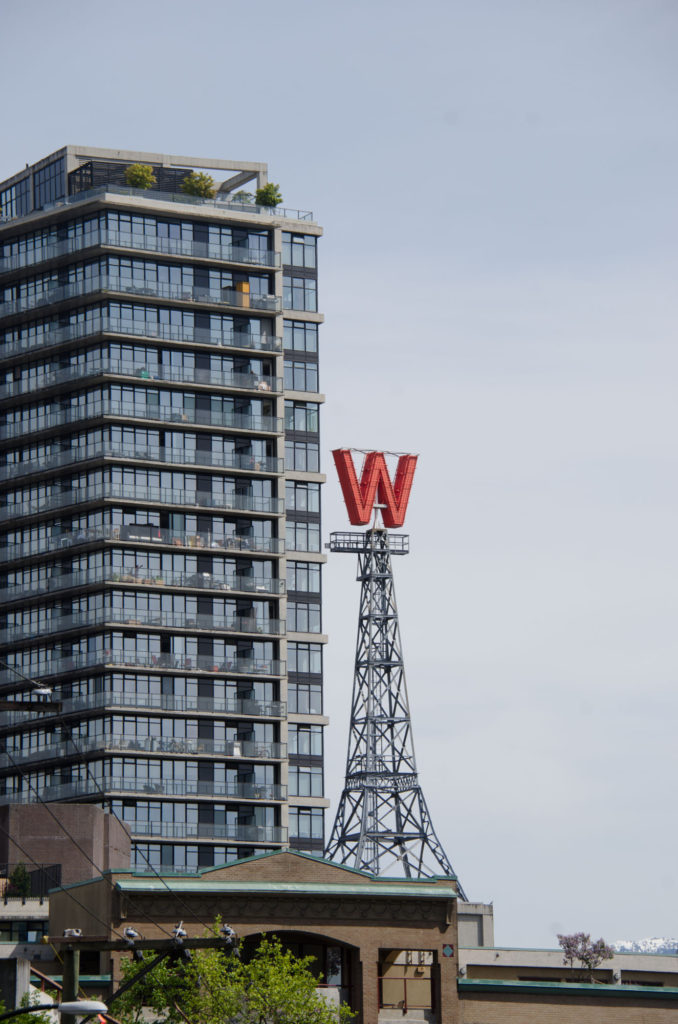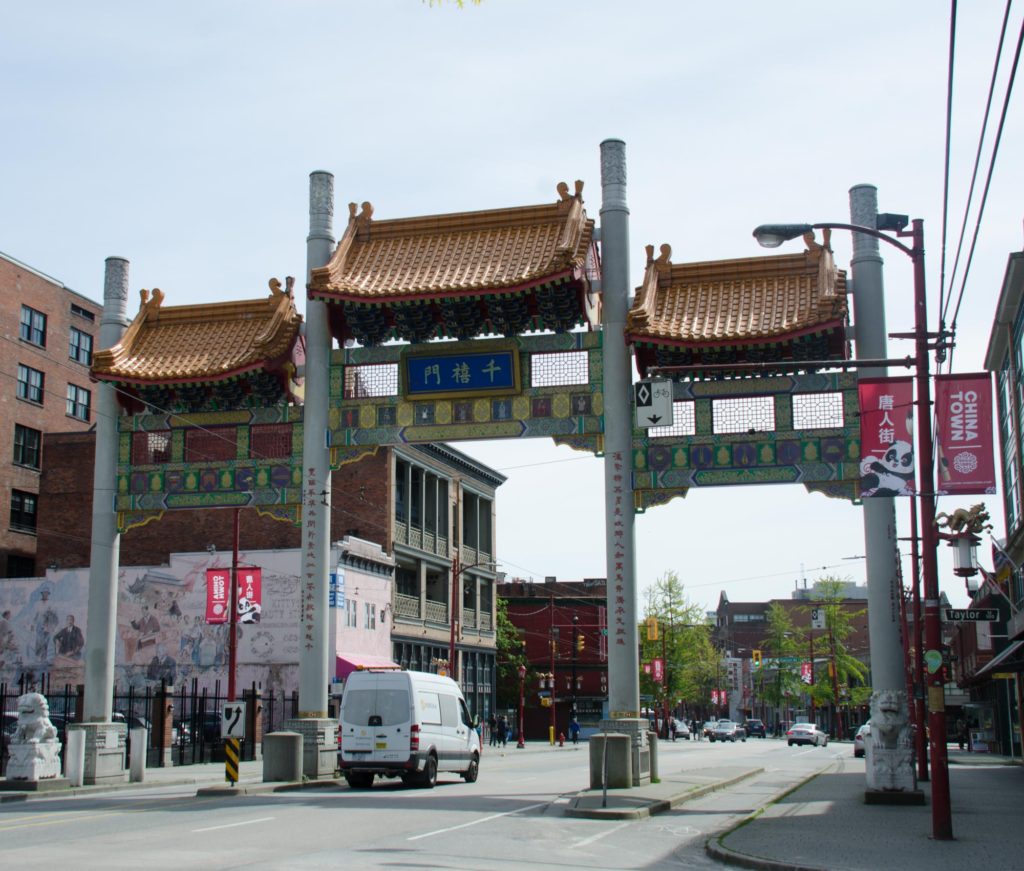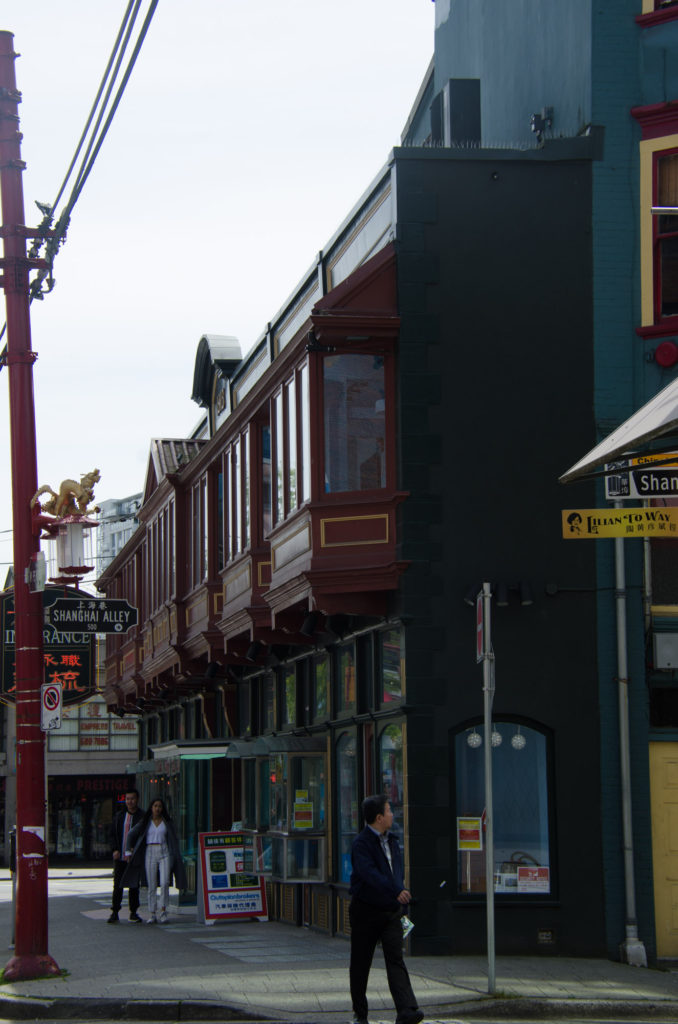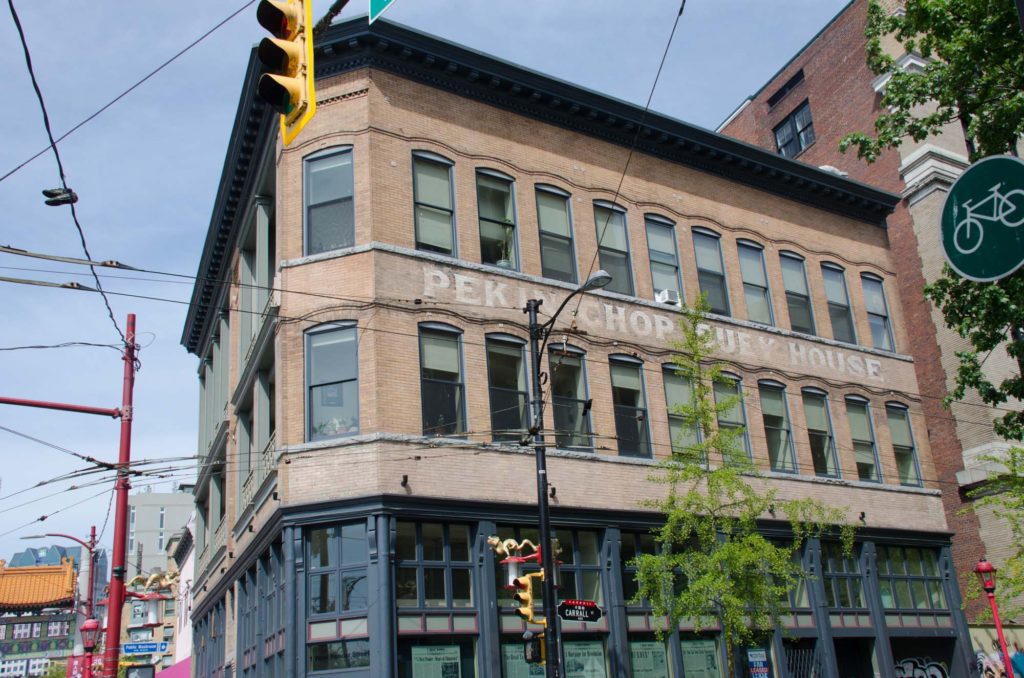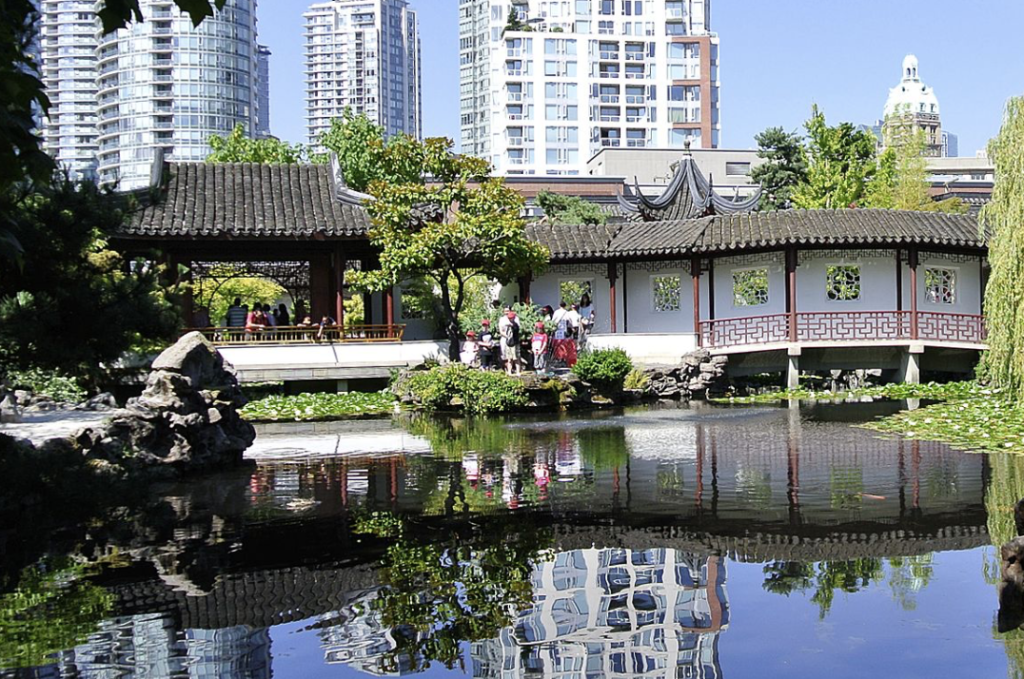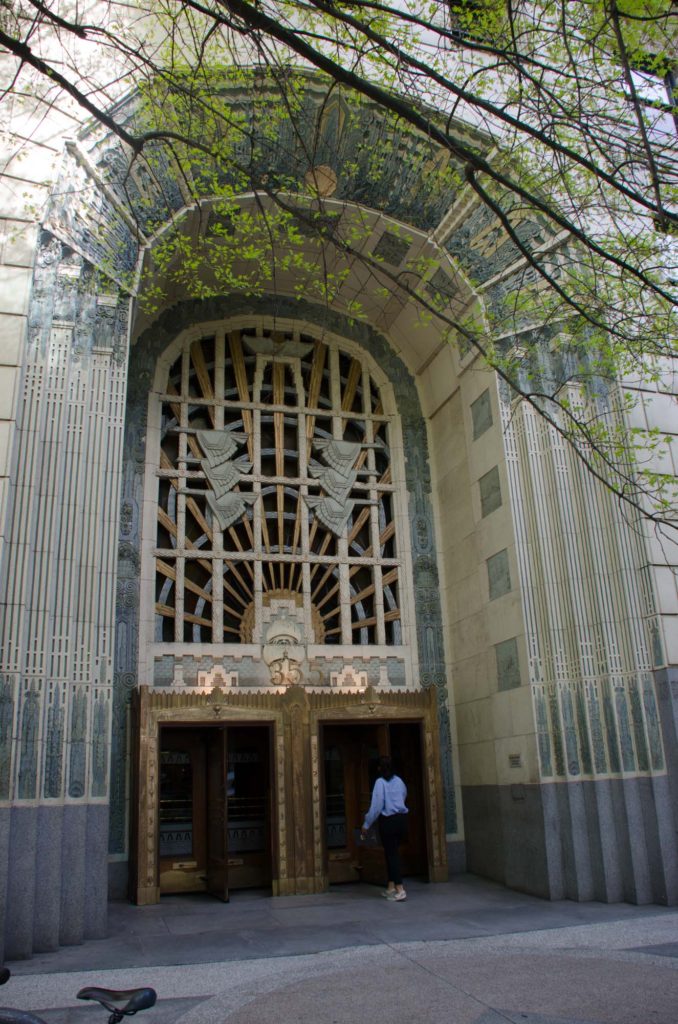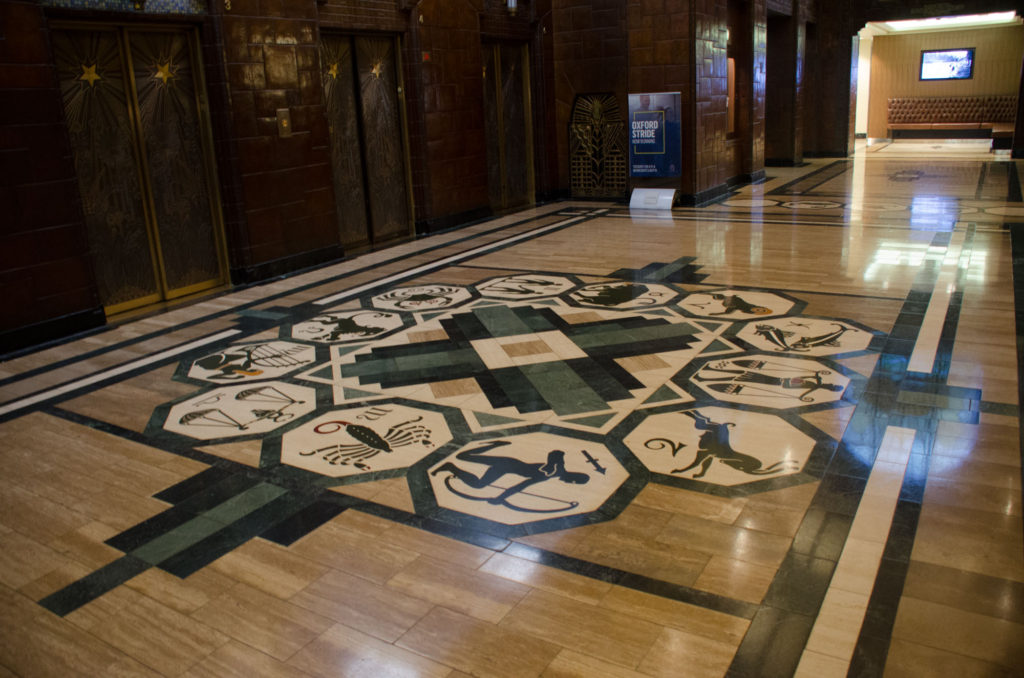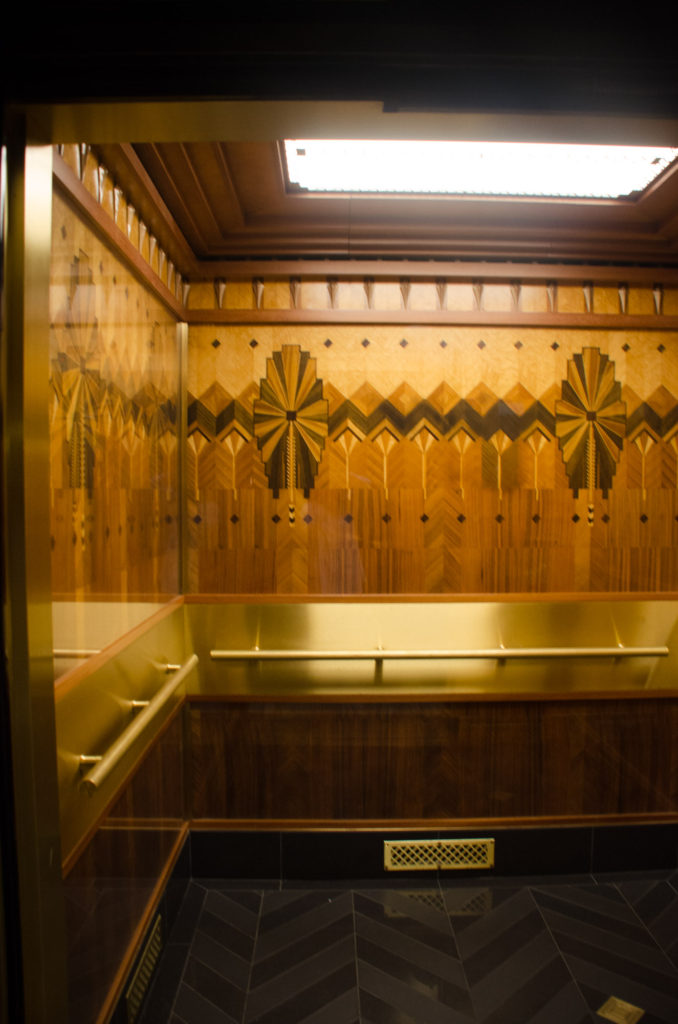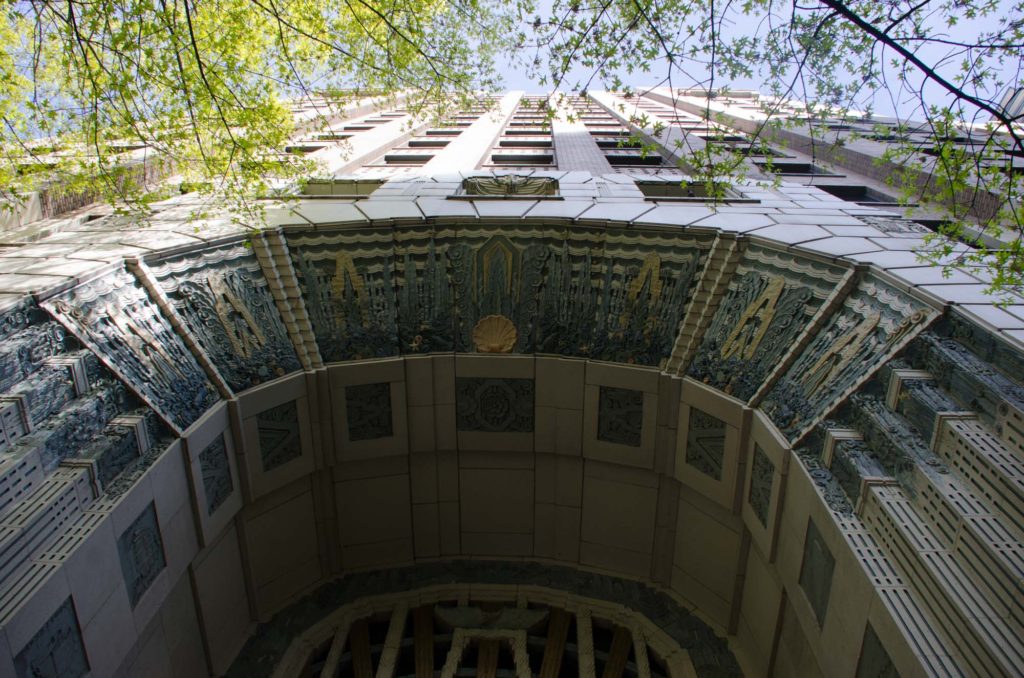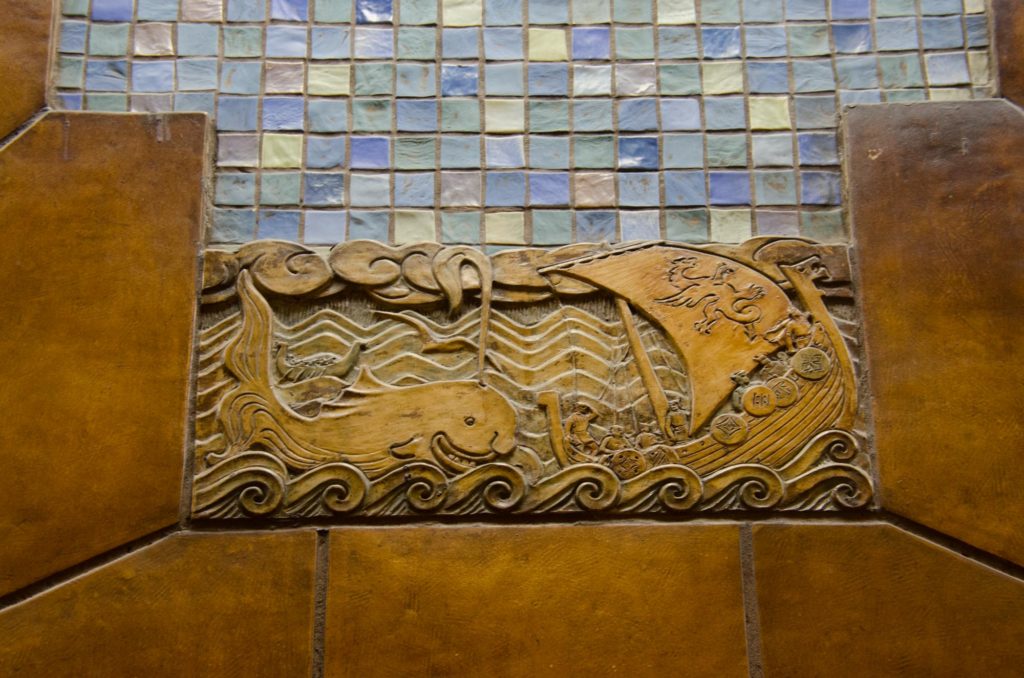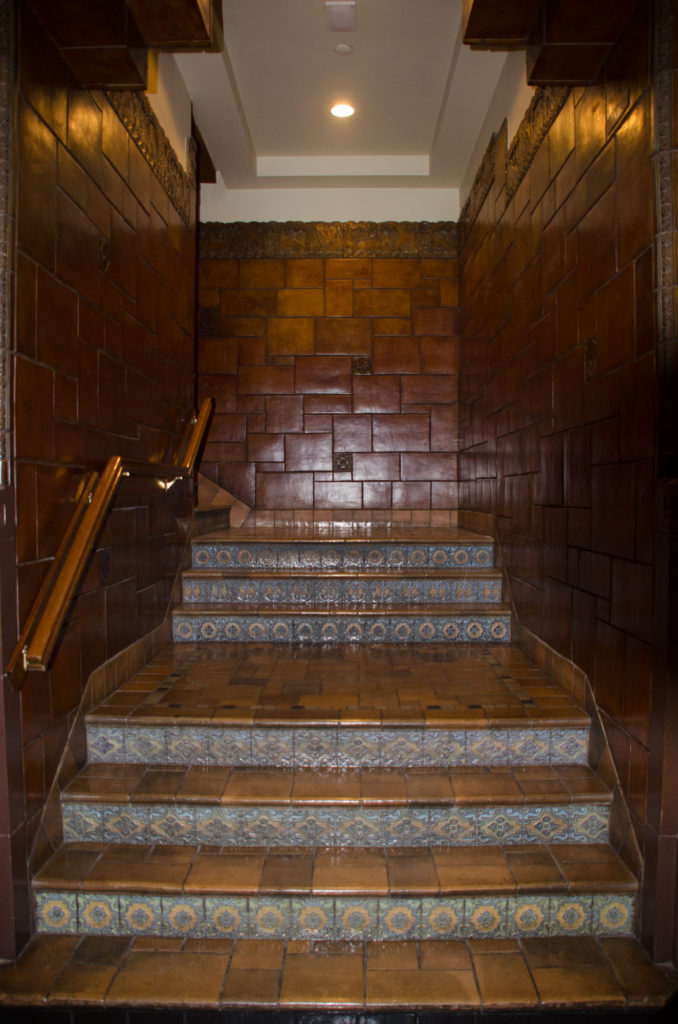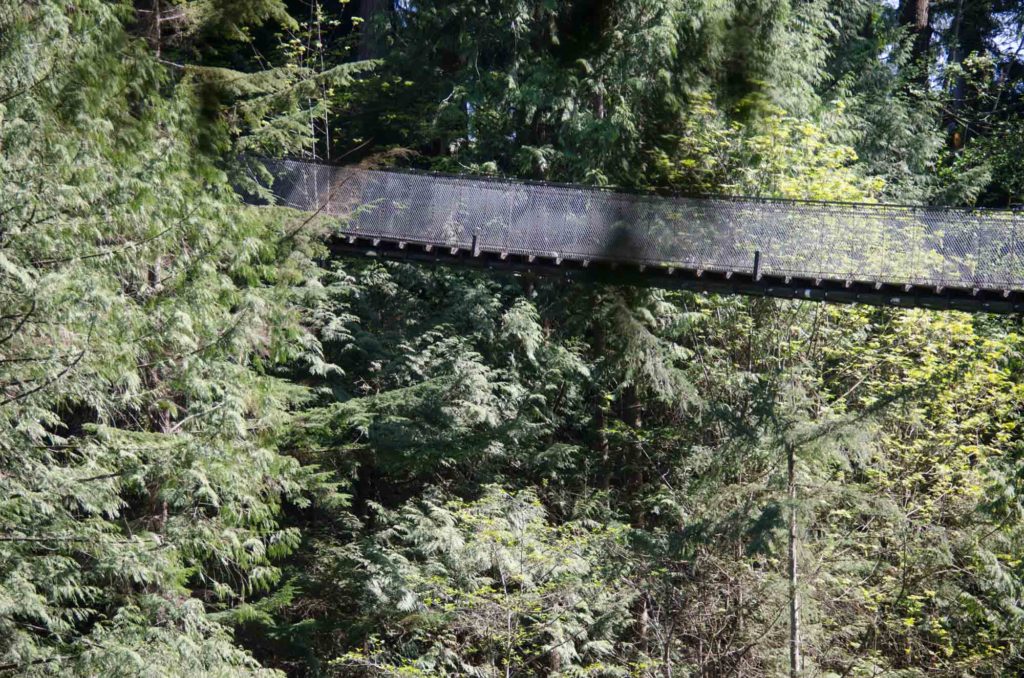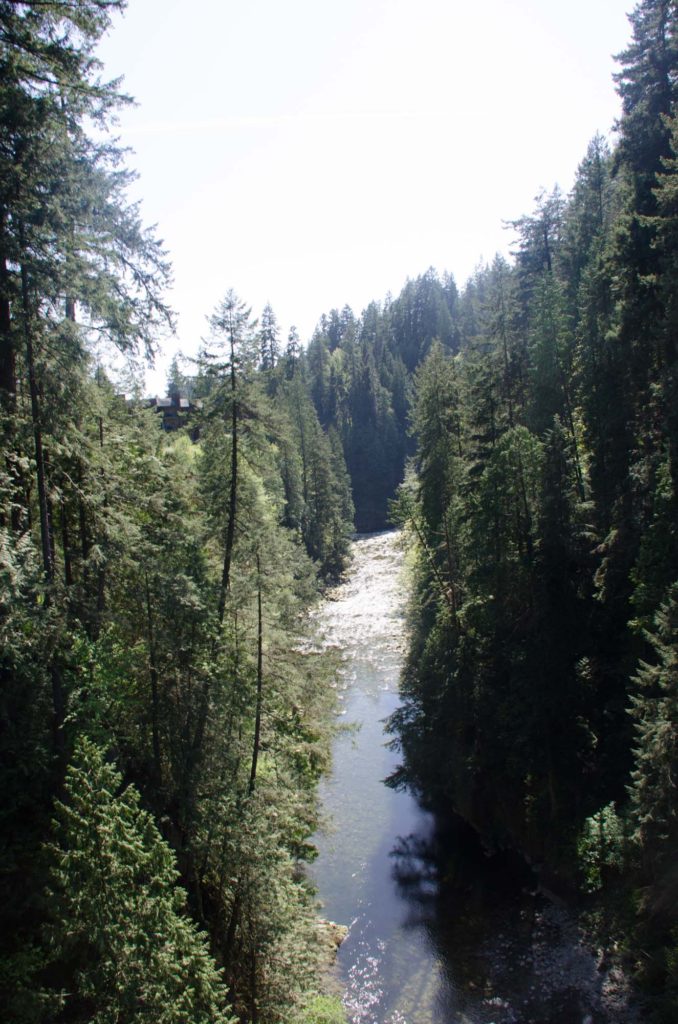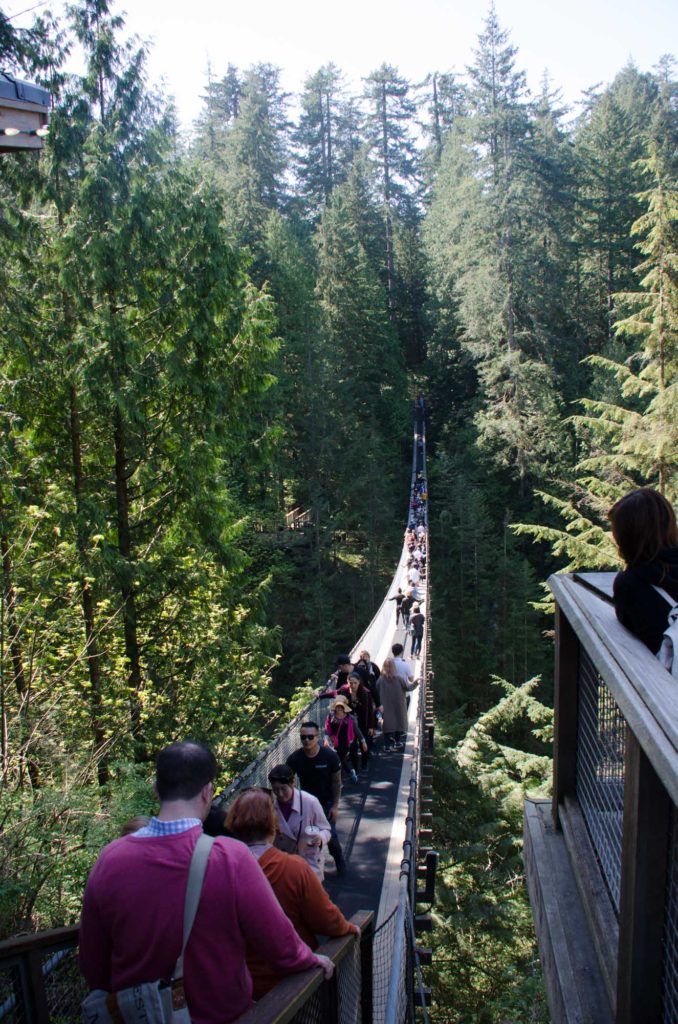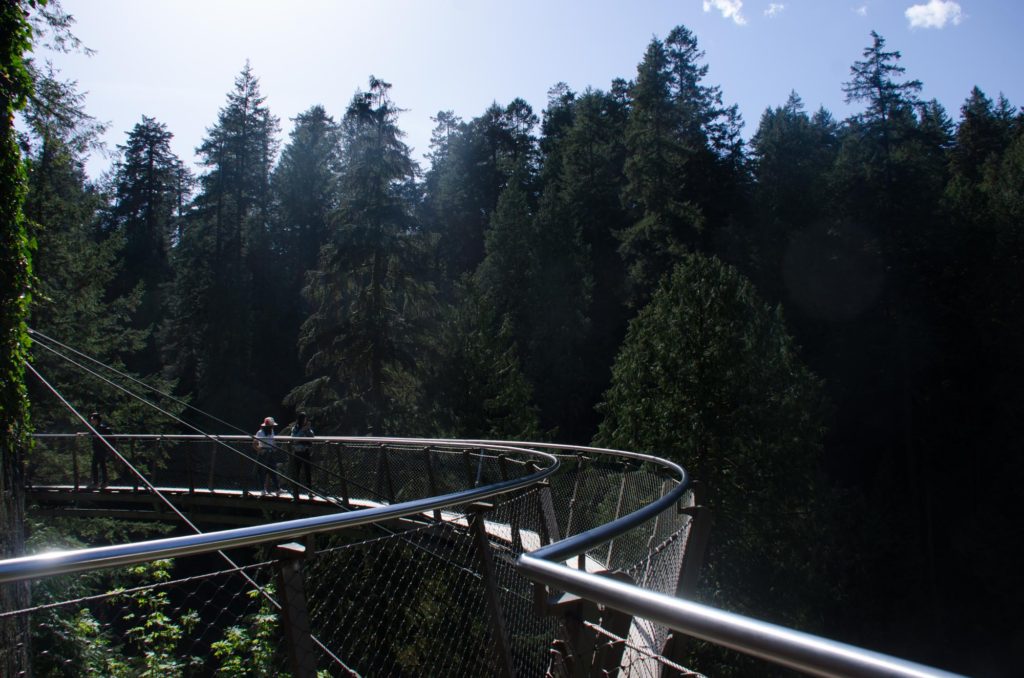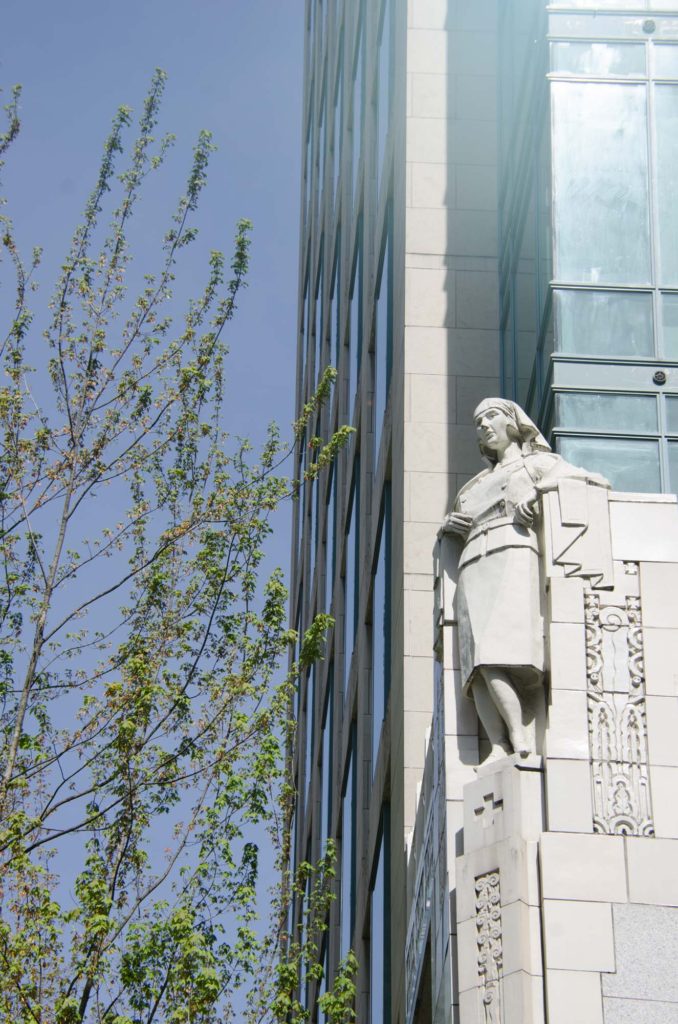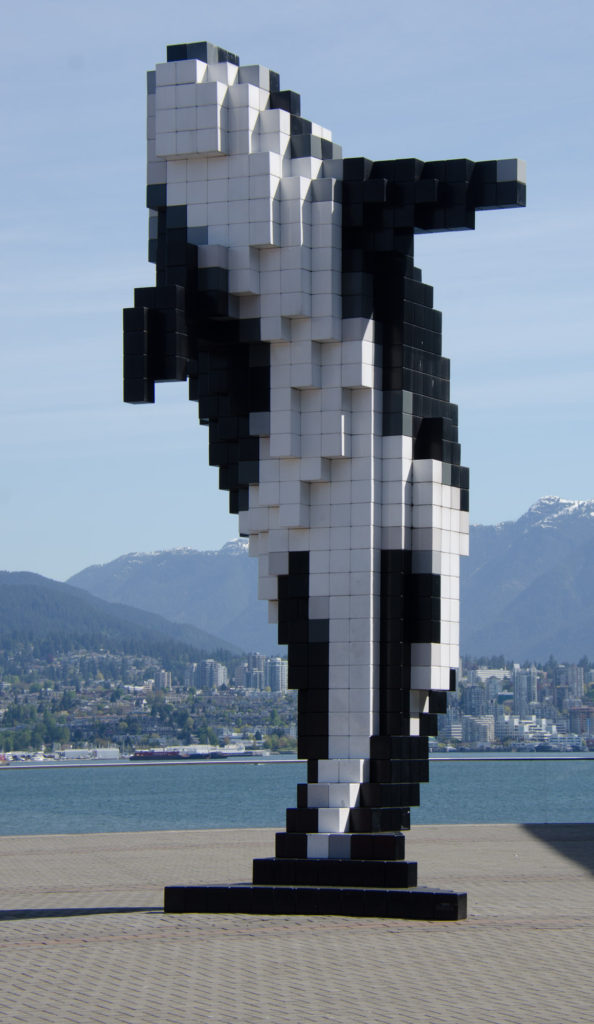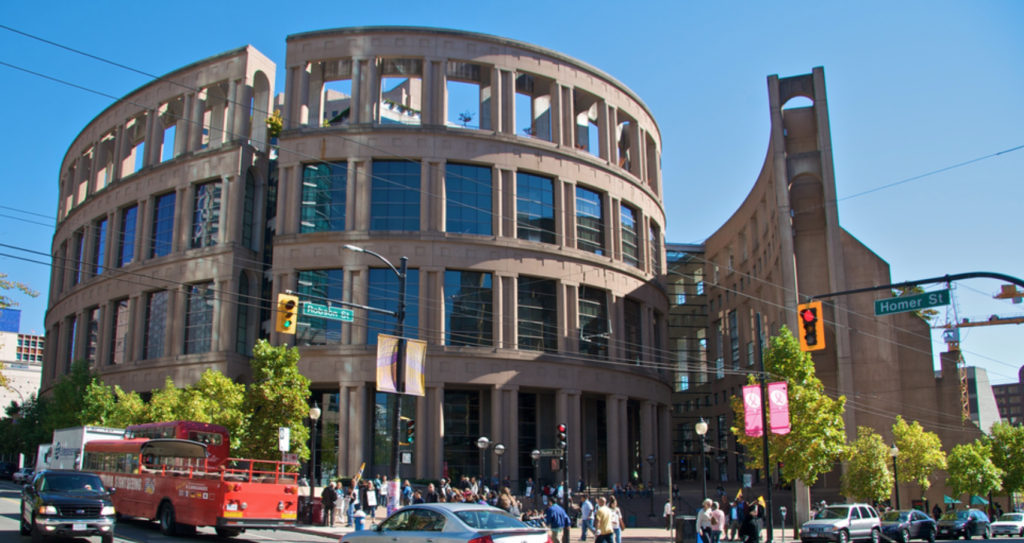Vancouver
British Columbia
This Giant W stands at the location of the now partially demolished historic Woodward’s Building in the Downtown Eastside of Vancouver. The original portion of the building was constructed in 1903 for the Woodward’s Department Store when that area of Cordova Street was the heart of Vancouver’s retail shopping district. The building was built in 1903 by Charles Woodward as the second location for the Woodward’s department store. Woodward’s pioneered the concept of one-stop shopping; the store included a food floor which was at the time North America’s largest supermarket, household items, men’s and women’s fashion, and provided check cashing, travel booking and other services. The store was well known for carrying a large variety of goods that were not available anywhere else.
Not far from the big W is Vancouver’s Chinatown. Between 1886-1920, the first wave of Chinese immigrants settled around Carrall Street and Dupont (now Pender) Street creating today’s Chinatown. By 1890, the area was home to more than 1,000 Chinese residents. Today, sadly, the area is seeing some hard times with drugs and homelessness, but it is worth an exploration none-the-less.
Chang Toy was the owner of the Sam Kee company, an import and export business. In 1903 Kee purchased a standard-sized lot, however, in 1912, Vancouver widened Pender Street and expropriated 24 feet of the above-ground portion of the property effectively making the remaining frontage property impractical, Toy decided to build anyway. In 1912, he hired architects Brown and Gillam to design a riveted steel framed structure featuring a second story of bay windows. Though slim the building was heavily used, with the basement originally housing both public baths and a barber shop, the top story for offices and the main floor used for shops. The building is fun to seek out as it is said to be the “shallowest commercial building in the world” according to the Guinness Book of Records. (all though that claim is contested).

The Wing Sang Building is the oldest building in Vancouver’s Chinatown and now houses a private art collection.
A trip to Vancouver’s Chinatown should be centered around a visit to the Sun Yat-Sen Classical Chinese Garden.
The Dr. Sun Yat-Sen Classical Chinese Garden is modeled after the famous Ming Dynasty (1368-1644) gardens from the city of Suzhou. When this garden was completed in 1986 in time for Expo ’86, it was the first full scale Chinese classical garden constructed outside of Asia.
The Marine Building in downtown Vancouver, designed by McCarter and Nairne, is truly one of the world’s most exquisite examples of art deco architecture. When it opened in 1930, it had the distinction of being the tallest building in the British Empire.
Named for its plethora of fine marine-themed ornamentation, the building was conceived by Lt. Commander J.W. Hobbs, an entrepreneur from Toronto.
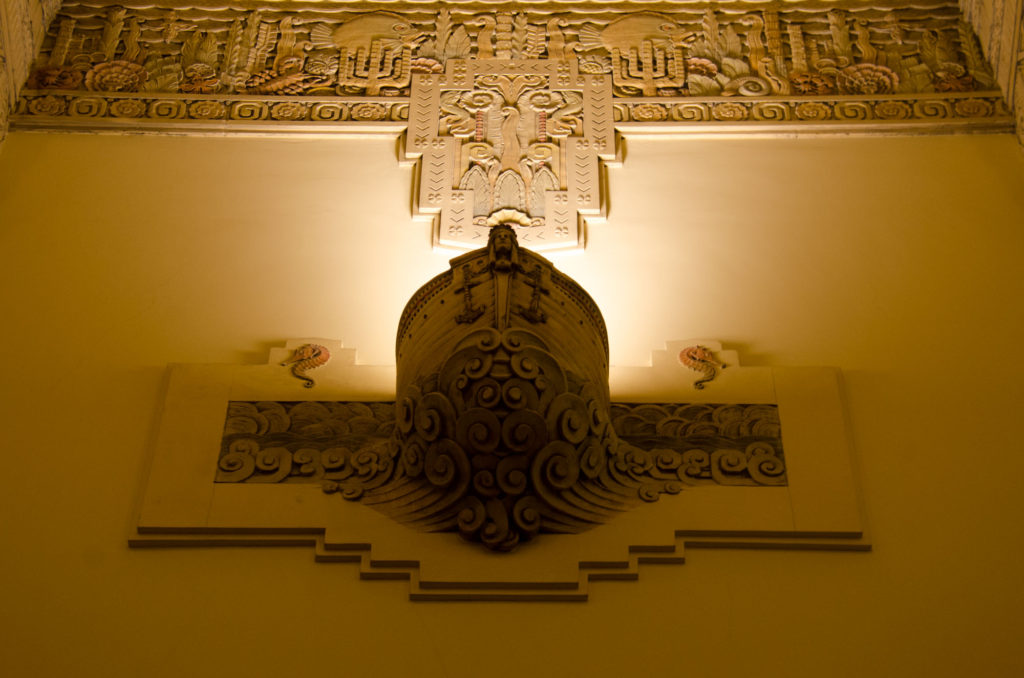 Hobbs recognized that the opening of the Panama Canal in 1914 would greatly increase Vancouver’s importance as a commercial port, and decided that the city needed a grand, iconic building.
Hobbs recognized that the opening of the Panama Canal in 1914 would greatly increase Vancouver’s importance as a commercial port, and decided that the city needed a grand, iconic building.
*
*
No trip to Vancouver would be complete without a visit out to the Capilano Suspension Bridge.
In 1888, George Grant Mackay, a Scottish civil engineer, and land-developer came to Vancouver and purchased 6,000 acres of dense forest on either side of Capilano River. He first built a cabin on the very edge of the canyon wall and then in 1889, he suspended a footbridge made of hemp rope and cedar planks across the canyon.
The bridge and Mackay’s cabin became a popular destination for friends, dubbed Capilano Tramps, who made a journey by steamship then ‘tramping’ up the rough trail to Mackay’s property. After his death in 1903, the hemp rope bridge was replaced by a wire cable bridge.
The bridge has a long history of loving owners that have brought it to what it is today, a great nature hike and a well-designed tourist attraction.
This gorgeous statue is a replica. The original sat on a 1927 building at the NW corner of W Georgia and Hornby Streets. The Georgia Medical-Dental Building was the first art deco skyscraper built in Vancouver and amongst its rich ornamentation were three 11-foot-high terracotta statues of WW1 nursing sisters, gracing the corners of the 10th floor. The architects, McCarter and Nairne, had both served in WWI. McCarter had been wounded and credited the nurses with saving his life. The sculptures, designed by Joseph Francis Watson, were a way to honor them.
In 1989 the building was destroyed, but after a public outcry, copies of the nurses were placed on the lower floor.
Digital Orca is a 2009 sculpture of a killer whale by Douglas Coupland, installed next to the Vancouver Convention Centre and worth seeking out, for the fun of the sculpture and the breathtaking view of the harbor.
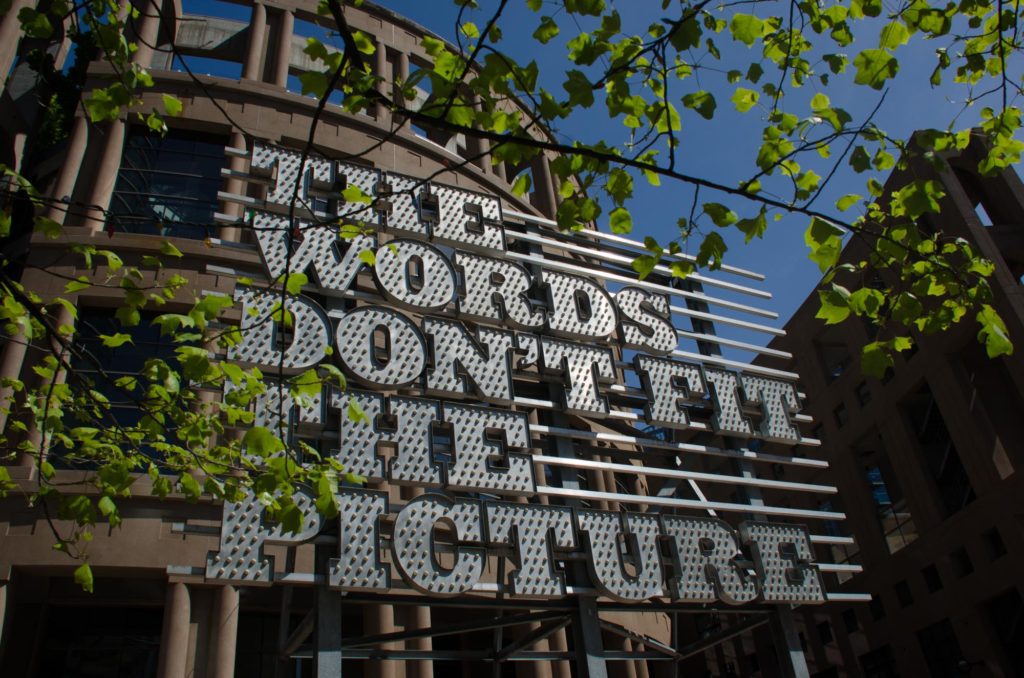
Neon sign on the corner of Library Square by Ron Terada. Part of Vancouver’s Public Art Program.
The Vancouver Downtown Public Library covers an entire city block. Designed by Moshe Safdie & Associates and local partners Downs/Archambault it is 9 stories tall and 398,000 square feet, built at a cost of $107 million Canadian.
Designed much like the Roman Colosseum the building is oval-shaped and connects with the federal office tower. It contains both retail and service facilities on the ground floor.
